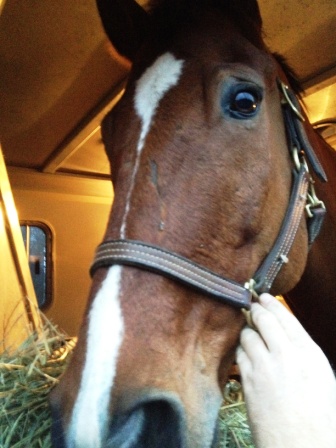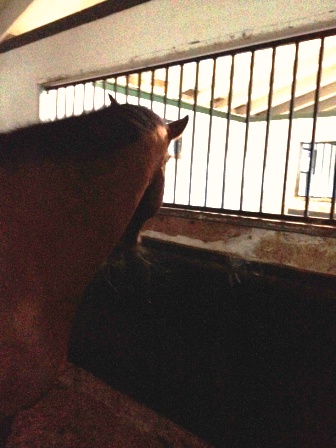January Pet Move of the Month: Leo’s Horse Move
 Sometimes larger than average pets come along, and though it can be a little trickier to figure out how to transport them safely, we find a way to get the job done.
Sometimes larger than average pets come along, and though it can be a little trickier to figure out how to transport them safely, we find a way to get the job done.
We recently had the chance to move Leo, a charming (and very big) horse going from Portland, Oregon to Santa Barbara, California. Leo is a 17-hand, 1,500 lb Oldenburg, and according to the agent who moved him, is "every bit as sweet as he is large."
This unique move went smoothly (the agent was even able to keep a video feed going during the trip in order to keep an eye on Leo), and as you can see below, his new home looks beautiful.
All of this made it clear that Leo deserved to be our January pet move of the month! Help us congratulate Leo for being such a great traveler, and stay tuned to the blog for more updates and info about moving pets of all kinds.

Leo's new home in Santa Barbara

Researching the rules for moving a horse domestically or internationally? Here are a few things to keep in mind.
Horse Import into the US
Quarantine Period (For Coggins Infectious Anemia Testing): Two to Three Days
Purpose: To check for piroplasmosis, glanders and dourine
Note: Positive samples are unusual in horses from Western European countries, but the risk of piroplasmosis is quite high if your horse has been to Russia, Southern Europe or the South of France. In these cases a pre-export test is probably worthwhile.
Release from quarantine schedules for various horse breeds:
-Gelding or ANY breed under two years old – May be released after standard quarantine period. (Two to three days with negative blood results.)
-Mares and Stallions over two years old -- Move to CEM Quarantine testing facility.
-Mares and stallions more than two years of age (731 days) proceed to CEM (sexually transmitted diseases) quarantine after the standard quarantine.
-CEM quarantine must take place at officially prescribed farms and they must be transported in a sealed vehicle.
Mares: Within 30 days of export CEM swabs from clitoris fossa and clitoris sinus must be negative. This testing takes 14 days and is repeated in the United States during CEM quarantine. Quarantine after arrival at the prescribed farm takes at least 14 days.
After receiving negative results the Mare may be released.
Stallions: Within 30 days of export CEM swabs from fossa glandis, sinus urethralis and from the surface of prepuce must return negative. Testing takes about 14 days. Stallions have to cover two mares, obtained especially for that purpose, and must undergo a special testing program together with these mares.
Domestic Horse Transportation
Documents Required:
-Please make sure your vet is ‘Accredited’ & ALL signatures are in BLUE INK
-Original Health Certificate issued by a Veterinarian
(Certificate should be issued within 10 days from date of shipment)
-Coggins Test showing horse is negative for Equine Infectious Anemia (EIA)
(Must be tested within 12 months from the date of shipment)
-Printed History of Horses’ Vaccination Records sent to your PetRelocation specialist.
(Suggested vaccinations include West Nile Virus and Flu/Rhino)
Please Note:
We recommend having your horse microchipped (if he or she is not already tattooed or permanently branded) for international and domestic shipments. Please discuss the microchip options with your PetRelocation Consultant or your veterinarian.
